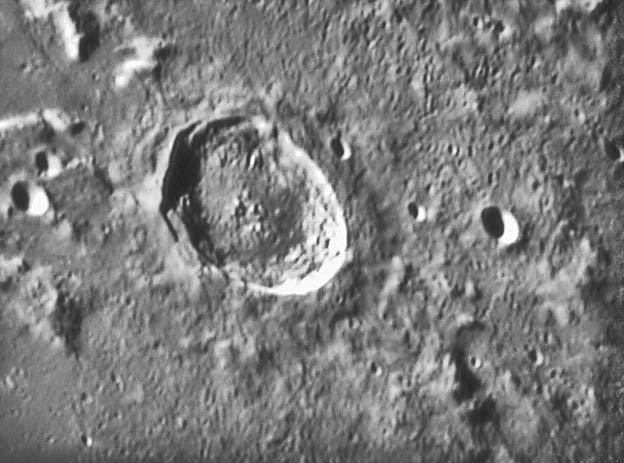Difference between revisions of "April 20, 2005"
| Line 53: | Line 53: | ||
</table> | </table> | ||
<p> </p> | <p> </p> | ||
| − | + | {{wiki/ArticleFooter}} | |
| − | |||
| − | |||
| − | |||
| − | |||
| − | |||
| − | |||
| − | |||
| − | |||
| − | |||
| − | |||
| − | |||
Revision as of 19:20, 1 February 2015
Almost Classic Crater
Image Credit: Ralf Vandebergh |
|
Almost Classic Crater Eudoxus is a somewhat unusual impact crater. It has most of the attributes of a complex crater - its is larger than 35 km, has terraced walls, and a relatively flat, partially smooth floor. What it lacks that fresh complex craters have is a significant central peak. Eudoxus has a cluster of small hills, like the nest of a small, untidy bird. Remember this. This image beautifully captures the glacies of Eudoxus. Glacies is a 19th century term for the often abruptly bounded mound that surrounds the crater like a fat tire on a bicycle rim. The glacies is made up of material moved both upward and downward by the crater-forming impact. Impacts act like point source explosions within the lunar crust. The explosion (actually a rarefraction wave) pushes up the crust around the rim of the crater, and this mound is added to by nearly vertically launched ejecta that falls back down around the crater. Studies of terrestrial impact craters suggest that the uplift and fallback each account for about 50% of a craters rim height. Finally, do you recognize the rubbly background of Eudoxus? It is small hills and mountains ejected during the formation of the Imbrium basin. I speculate, getting back to the question of Eudoxus piddly peaks, that the craters formation on the thick layer of Imbrium ejecta debris caused the rebound energy that normally forms central peaks to be dissipated by the rubble. Are there other scrawny central peaks in basin ejecta? Look at nearby Aristoteles. Technical Details: Related Links: Yesterday's LPOD: Before and After Tomorrow's LPOD: Half a Crater Shadowed |
|
Author & Editor: Technical Consultant: Contact Translator: A service of: |
COMMENTS?
Register, Log in, and join in the comments.




